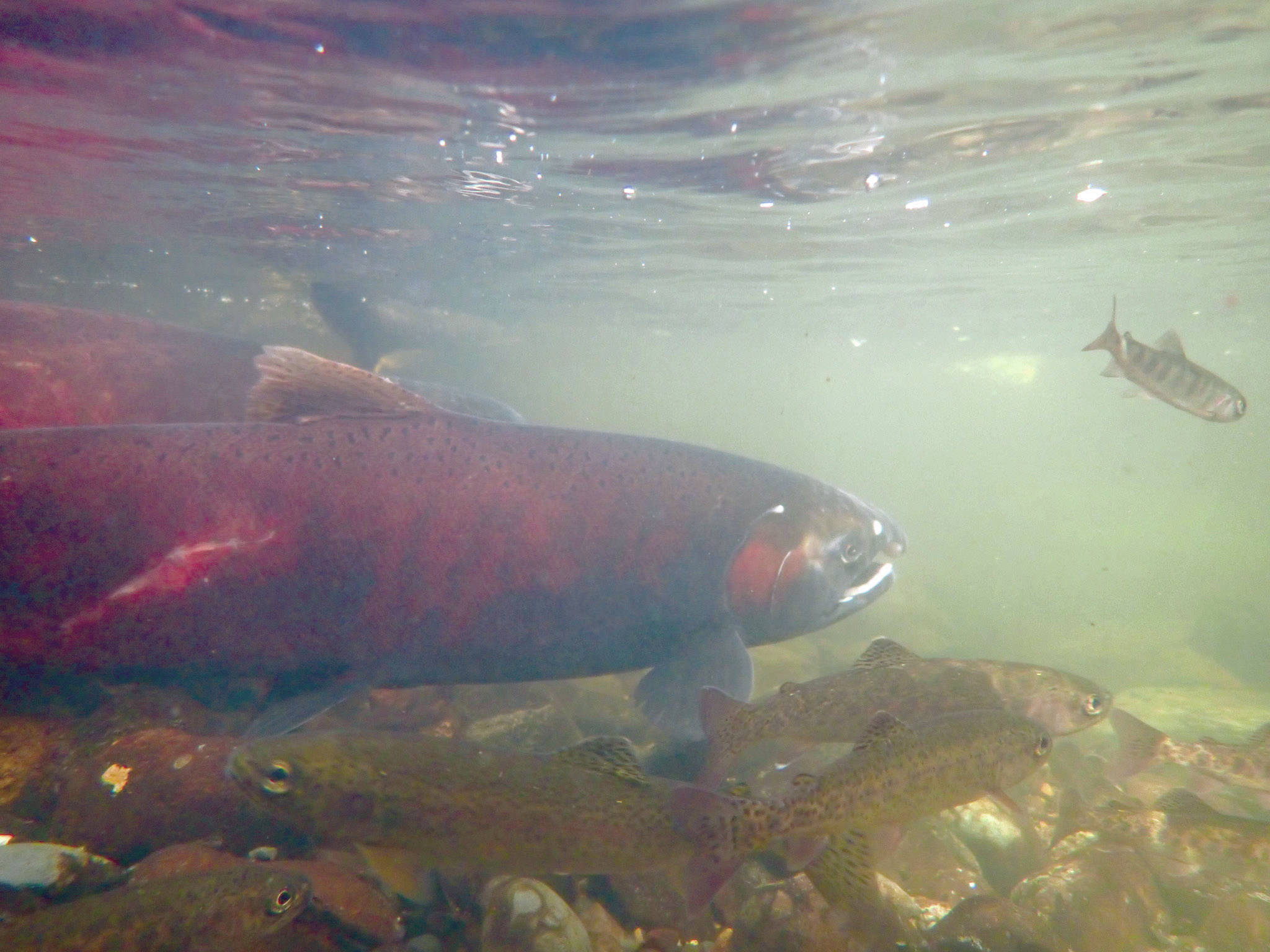Warmer temperatures are causing a farming boom in Alaska that has some activists concerned about new threats to salmon populations statewide. That’s according to a virtual workshop hosted by Cook Inletkeeper last week, which featured people around the country who are working to make farms safe for salmon populations.
The virtual workshop was held via Zoom and featured Cook Inletkeeper Local Foods Director Robbi Mixon, Cook InletKeeper Science and Executive Director Sue Mauger, Kevin Scribner with Salmon Safe and Sager Small, who owns a vineyard in the Walla Walla Valley.
The number of farms in Alaska has grown by 30% over the last five years, with the number of small farms — defined as farms between 1 and 9 acres — is up 73% since 2021.
Mauger said that climate change has had a big impact on farming in Alaska.
“With my consumer hat, I’m thrilled that we are having more local food production, but with my science cap on I have some real concerns about how that growing culture that’s happening here, particularly on the lower Kenai Peninsula but across the state … will intersect with our water quality.”
Mauger said she thinks one of the reasons Alaska is seeing an increase in farming activity is because of climate change, which she said has resulted in warmer temperatures on top of Alaska’s long summer days.
“We can really take advantage of those 19-20 hours of daylight with that extra warmth,” Mauger said.
Data from the Alaska Center for Climate Assessment and Policy shows that statewide annual temperature trends are going up. Temperature changes have been most dramatic in the northern parts of Alaska, where air temperatures have increased by about 6.2 degrees Fahrenheit. Air temperatures in the Kenai Peninsula region have increased by about 3.3 degrees Fahrenheit on the eastern peninsula and 3.7 degrees Fahrenheit on the western peninsula.
While climate change is generally associated with “long-term trends of warmth,” Mauger said, Alaska farmers will most directly experience it in the form of unpredictable weather conditions. Farmers may feel the impact when trying to establish planting and harvesting schedules around seasons, for example.
Even if people cannot see a water system from their house, however, they may still directly impact the “salmon support landscape.”
“I think [it’s] really important to understand that you are a part of the watershed and what you do on your plot of land is connected to the health of the salmon stream,” Mauger said. “That’s why we feel it’s really important to cast a really broad net in this conversation and to help people understand … that they play a really valuable role as a steward of the landscape.”
A desire to make sure “broccolini and the sockeye salmon sit happily on a plate together” led to the collaboration between Cook Inletkeeper and Salmon-Safe, which Mauger said will work this year to help partner them with Alaskan farmers.
Salmon-Safe aims to improve farming habits that maintain a healthy watershed. Those habits may include optimizing water use, keeping streamside vegetation health, using long-term soil conservation techniques and using pest management practices that protect water quality. Farms that make those changes may qualify for a Salmon-Safe Certification, in the form of a label they can add to products made at their farm.
Salmon-Safe has a stated mission of working to transform land management practices so that Pacific salmon can thrive in West Coast watersheds. Kevin Scribner, who presented on behalf of Salmon-Safe during Friday’s workshop, said sites that are safe for salmon have a net positive impact on their watershed.
In determining whether a site is safe for salmon, Scribner said they look at wetland area management, irrigation water use, erosion and sediment control, biological diversity and fertility and pest management systems.
“Many of the Salmon-Safe standards are about maintaining your land such that you do not have runoff, or if there is runoff, it’s not toxic to fish,” Scribner said.
The benefits farmers stand to gain by becoming Salmon-Safe certified, Scribner said, come from the marketplace and include market access, product differentiation, price premium and operational efficiencies.
The full workshop can be viewed on Cook Inletkeeper’s YouTube page.
Reach reporter Ashlyn O’Hara at ashlyn.ohara@peninsulaclarion.com.

